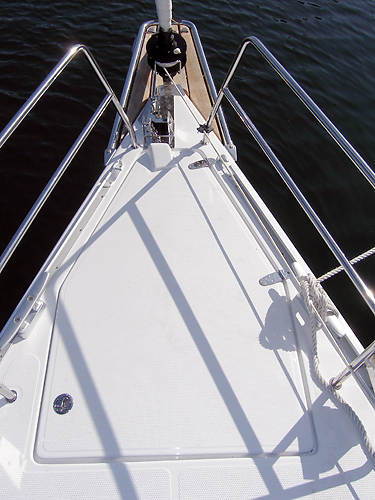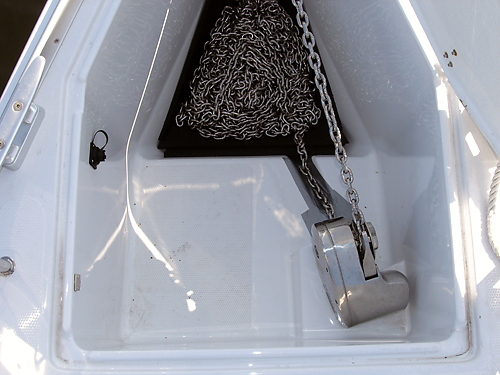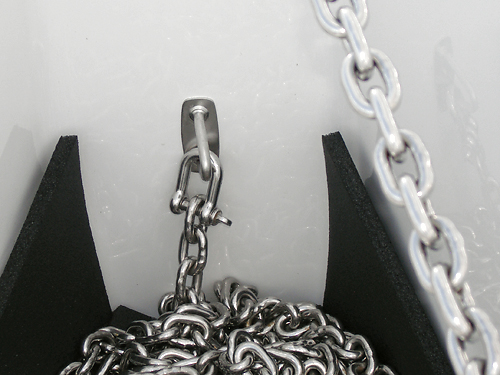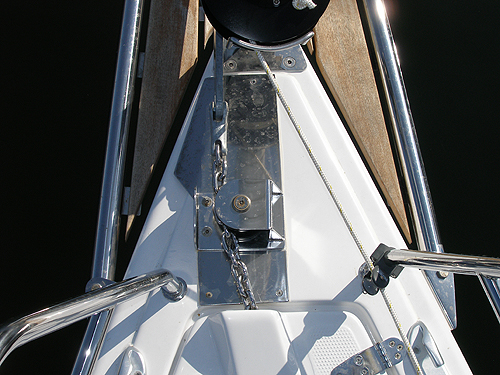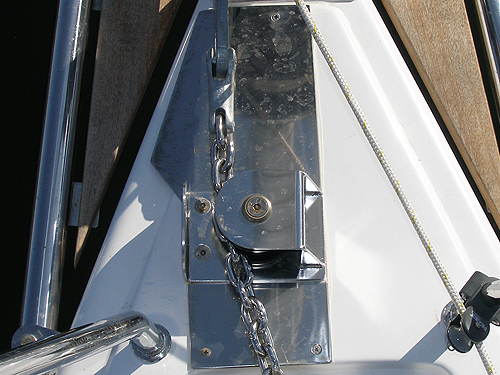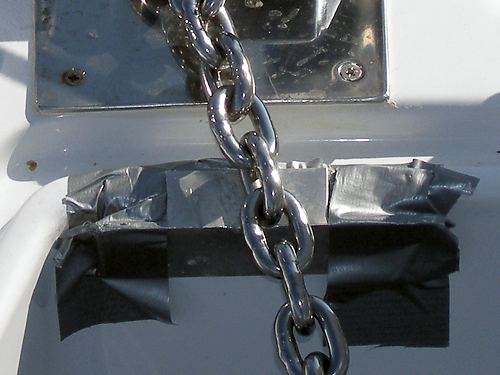|
Bow anchor with
chain roller The new construction for the anchor with the bowspring is in our opinion more elegant. It also gives more space to move around in the front of the boat. What was missed in the design was to protect the gelcoat underneath the anchor where the chain is attached. Due to heavy sea and the anchor moving up and down we got a hole in the gelcoat where the anchor was hitting the boat. A solution to this was to uninstall the vertical chainroll, design a steelplate that can be fitted under it and install everything again. Also, you have to protect the edge of the anchorbox so the chain will not wear the edge as the anchor is dropped. See below.
|
|
1. Front deck with bowspring and without the old anchor holder in stainless steel. |
2. The anchor box with 30 meters of stainless steel and the windlass. Big enough to be used as a bathtub. The black spot to the left is the connector for the handcontrolls cable.
|
|
|
3. The black matt under the chain is done from same material you use underneath your sleeping bag when camping. It stops the chain from moving around and protects also the gelcoat. The track for the chain is at the moment protected with ducktape.
|
4. The chain is attached to the boat with a schackel in the anchorbox. I'm not aware if there are any reinforcements behind the steel loop. During spring 2010 we were mailed by a fellow memeber at MyHanse forum. He wrote about an serious incident where his anchor had dropped during heavy sea. The anchor dragged under the boat as they were close to several sandbanks. His suggestion is to attach the chain with a rope to the boat and to have a knife in the anchor box so you can cut it loose. A very good suggestion indeed.
|
|
|
5. The new chain roll replaces the old anchor holder. From the beginning when the steel plate was designed the service technician wanted to make two pieces, one before the roll and one after it. We thought that it would not be nice as a solution and asked him to remowe the roll first and make a bigger plate. The resoul is been seen above. Now the plate is fixed with Sikaflex and the bolts from the chain roll. |
6. Overall view |
|
|
7. Detailed picture
|
 8. The ducktape on the rim of the anchorbox is only temporarly there. Its holding a piece of aluminium that protects the gelcoat. The part under the chain was grinded severly after 6 days of sea when we sailed from Greifswald to Stockholm. The piece of aluminium is going to be replaced with steel later on. The screws to the right, are they supposed to rust already??
|
|
|
9. A new boat should not have to be fixed with ducktape. But, a new protective plate of stainless steel is on its way. |
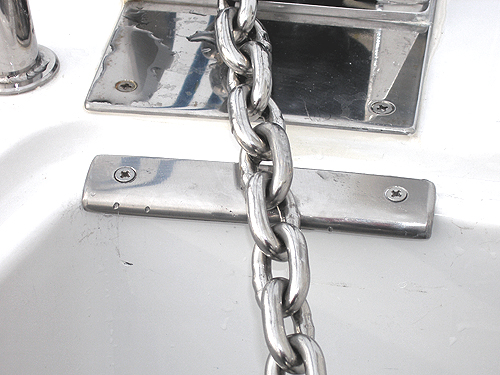 10. Finally we got the new protective steel plate. It turned to be really nice in the end. As you can see the front is slightly bent so it will protect the gelcoat even if the chain slacks a bit. |
|

